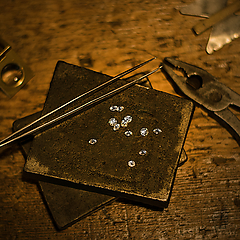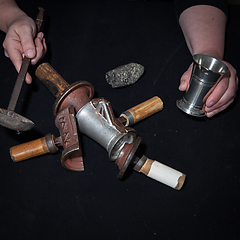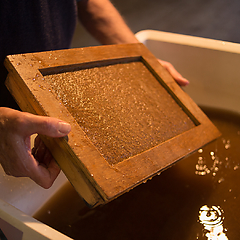Most children get familiar with paper cutting at primary school: folding a piece of paper and cut out a coaster or paper doll chain. Paper cutting art is related to this, it is a craft where shapes are cut out of paper with a knife or a pair of scissors. Pasted on a coloured background, the outlines give an attractive contrast. A technique that is often used in the Netherlands, is folding the paper in two, to get a symmetric cutting. Frequently after unfolding the paper one cuts varying details, thus producing different patterns after all. There are no typically Dutch designs to cut. One often cuts for special occasions, like weddings or current events, or one gets inspired by the Bible or other stories.



